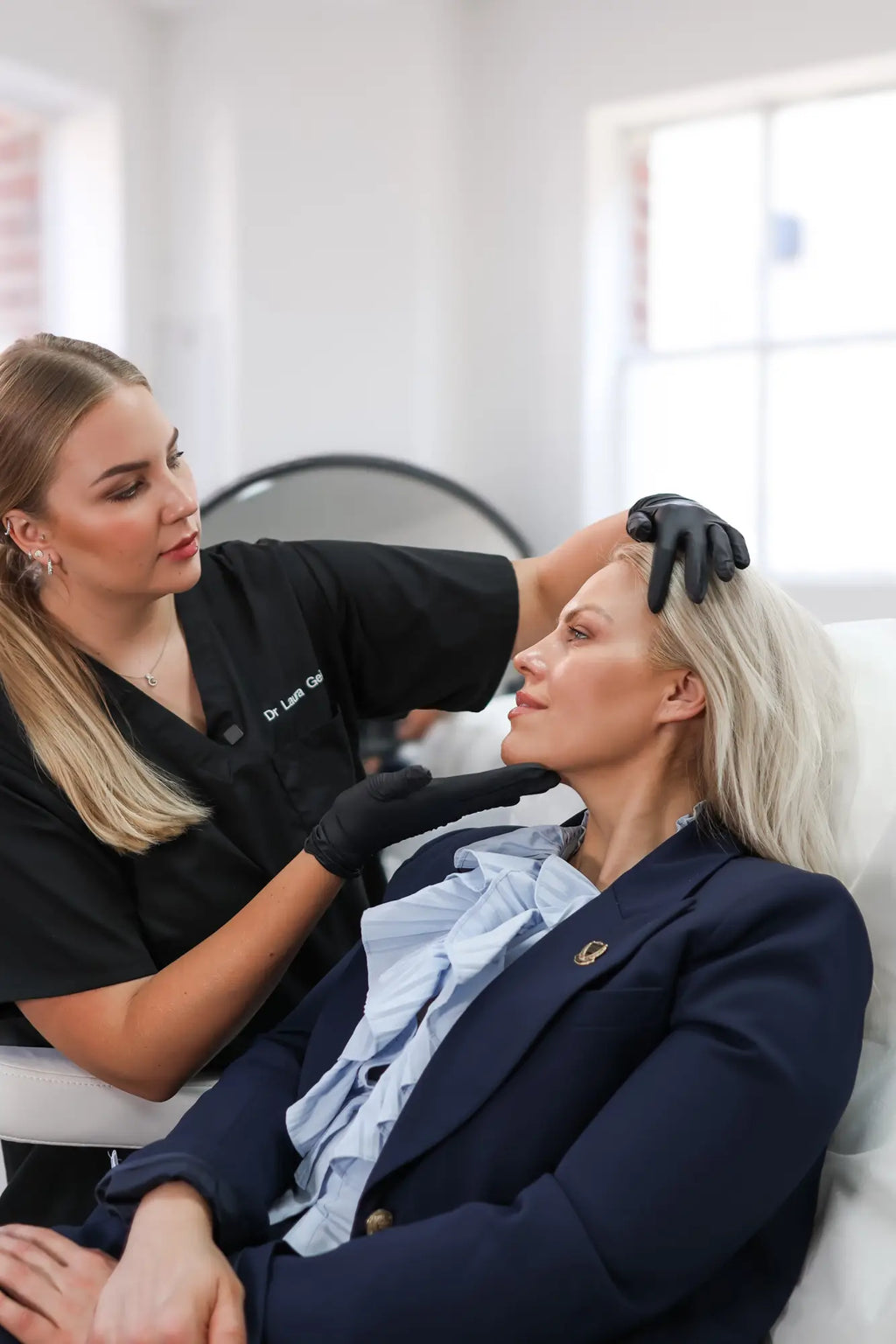What Happens If You Get Botox More Than Every 3 Months?

Content Verification



✨ Key Points at a Glance ✨
- 🕰️ Frequent Botox treatments (more than every 3 months) may reduce effectiveness over time.
- 💪 Long-term use can weaken facial muscles if not spaced out properly.
- ⚠️ Always follow your practitioner’s advice on timing to maintain natural results.
- 🌟 Results typically last 3-6 months, with top-ups recommended no sooner than 3 months apart.
💡 Key Advice & Tips from Our Experts 💡
- 🔑 Stick to your personalised treatment plan to avoid muscle resistance.
- 🛌 Rest and avoid touching the treated area for at least 24 hours post-treatment.
- 🏃♀️ Avoid strenuous exercise for 24 hours to prevent Botox from migrating.
- 💬 Ask your practitioner about alternative treatments if you're considering more frequent sessions.
Botox Anti Wrinkle Injections are a popular non-surgical solution for reducing fine lines and wrinkles. These treatments work by temporarily relaxing facial muscles, smoothing dynamic wrinkles caused by repeated expressions. Typically, Botox treatments last around 3-4 months before muscle movement gradually returns.
Some people consider getting Botox injections more frequently to maintain smoother skin. However, is this safe? Could frequent anti-wrinkle treatments lead to long-term side effects? In this article, we’ll explore the risks of receiving Botox anti-ageing treatments too often, including resistance, unnatural results, and expert-backed recommendations.
If you’re considering Botox for wrinkles, understanding the right treatment frequency is crucial. Our experts, including dermatologists and medical practitioners, will provide insights on maintaining safe, effective results. For more general information on Botox anti-wrinkle injections, visit our parent article covering essential Botox FAQs.
How Botox Injections Work
Botox for wrinkles works by temporarily blocking nerve signals that cause muscle contractions. This relaxation of facial muscles helps soften dynamic wrinkles, such as frown lines and crow’s feet. The effects of Botox treatments typically last for about 3-4 months before muscle movement gradually returns.
Medical professionals generally recommend waiting at least 3 months between Botox anti-ageing treatments. Dr. Giedre Narkiene, a dermatology specialist from It’s Me & You Clinic, explains: “Administering Botox injections too frequently can lead to unintended effects, such as reduced efficacy over time. The body may develop a resistance, making future treatments less effective.”
Overuse of Botox anti-wrinkle injections may also affect the skin’s natural balance, potentially altering facial expressions. Sticking to medically advised intervals ensures the best results while reducing the risk of complications. Consulting a qualified practitioner before adjusting your anti-wrinkle treatment schedule is essential.
Risks of Getting Botox More than Every 3 Months
Receiving Botox anti-wrinkle injections more frequently than recommended can lead to unwanted side effects. One major concern is Botox resistance, where the body produces antibodies that reduce the effectiveness of the treatment. This can make future Botox treatments less effective, requiring higher doses or alternative options.
Dr. Laura Geige, a medical director and skin expert, warns: “Excessive use of Botox injections can lead to an unnatural, frozen appearance. Over-relaxing facial muscles too frequently may cause imbalances, affecting natural expressions and symmetry.”
Another risk of frequent Botox anti-ageing treatments is muscle atrophy. If muscles remain paralysed for extended periods, they may weaken, leading to a sunken or hollow appearance in some areas. Additionally, long-term overuse can affect skin texture, making it appear thinner or less elastic.
Following a proper anti-wrinkle treatment schedule helps maintain natural-looking results while avoiding complications. Always consult an experienced medical professional before altering your Botox for wrinkles routine.
Can You Build Resistance to Botox?
Botox resistance occurs when the body develops antibodies that weaken the effects of Botox injections. This means the treatment no longer relaxes facial muscles as effectively, requiring higher doses or alternative solutions. Resistance is often linked to frequent Botox anti-wrinkle injections or high treatment doses.
Dr. Snieguole Geige, a dentist and medical doctor, explains: “Overuse of Botox treatments can trigger the immune system to recognise and neutralise the injected toxin. This reduces the effectiveness of the treatment, making it harder to achieve the desired anti-wrinkle effect.”
If Botox anti-ageing treatments become less effective, alternative anti-wrinkle treatments may be needed. Some patients switch to other botulinum toxin brands, such as Dysport or Xeomin, which have different protein structures. Others explore non-injectable options like laser resurfacing, microneedling, or chemical peels.
Sticking to the recommended treatment intervals helps reduce the risk of Botox resistance. A tailored approach by an experienced practitioner ensures long-lasting and natural-looking results. If you suspect resistance, consult a professional to discuss suitable alternatives.
Does More Frequent Botox Mean Better Results?
Some people believe that getting Botox treatments in London more frequently will enhance or prolong their results. However, increasing the frequency of Botox injections does not improve effectiveness. Instead, it can lead to unwanted side effects, including unnatural facial stiffness and resistance to the treatment.
Dr. Laura Geige states: “Overusing Botox anti-ageing treatments can cause excessive muscle relaxation, making facial expressions appear stiff or unnatural. Rather than enhancing results, frequent treatments may lead to an unbalanced or ‘frozen’ look.”
Beyond aesthetic concerns, overuse of Botox anti-wrinkle injections can cause muscle dependency. If muscles remain paralysed for too long, they may weaken, affecting facial symmetry over time. In some cases, excessive Botox use can also impact how the skin sits over the muscles, potentially altering its texture.
A personalised treatment plan, designed by a qualified practitioner, ensures the safest and most natural-looking outcome. Rather than increasing frequency, the focus should be on maintaining optimal results within medically recommended intervals. If you’re unsure about the right schedule for Botox for wrinkles, consult a professional to determine the best approach for your needs.
The Right Frequency for Botox Treatments
The recommended interval for Botox treatments is typically every 3-4 months. This allows the muscles to regain partial movement before the next session, ensuring natural-looking results. However, treatment frequency may vary based on individual needs, as factors like metabolism, muscle strength, and treatment area can affect longevity.
Dr. Giedre Narkiene explains: “While the standard interval is around three months, some patients may metabolise Botox injections faster. In such cases, earlier touch-ups may be considered, but only under medical supervision.”
It’s essential to consult a qualified professional before adjusting your Botox for wrinkles schedule. Over-treating can lead to muscle weakening and long-term changes in facial structure. A personalised plan ensures that Botox anti-wrinkle injections are administered safely and effectively, maintaining the best possible results. If you’re unsure about timing, seek expert advice before making any changes.
Finding a Qualified Practitioner for Botox near Me
Choosing an experienced professional for Botox injections is crucial to ensuring safe and effective results. A skilled practitioner understands facial anatomy, proper injection techniques, and the right dosage to avoid complications. Poorly administered Botox treatments can lead to uneven results, excessive muscle relaxation, or even health risks.
When searching for Botox near me, look for clinics with licensed medical professionals who specialise in Botox anti-wrinkle injections. Check their qualifications, patient reviews, and before-and-after photos. A reputable clinic will offer a consultation before treatment to assess your needs and recommend the best approach.
Before committing to frequent Botox anti-ageing treatments, always seek personalised medical advice. A professional will determine the right treatment schedule based on your skin type, muscle movement, and aesthetic goals. Avoid unqualified providers or cheap treatments, as these can compromise your results and safety.
The Bottom Line
Receiving Botox injections more often than every three months can lead to resistance, unnatural facial stiffness, and muscle weakening. Experts recommend sticking to a medically advised schedule to maintain safe and natural results. If you’re considering adjusting your Botox anti-wrinkle injections, consult a qualified practitioner for personalised advice. Choosing an experienced professional ensures effective Botox treatments while minimising risks. Always prioritise safety over frequency when planning your Botox anti-ageing treatments for long-term, natural-looking results.
Disclaimer: This article is for informational purposes only. Consult a qualified medical professional before making any Botox-related decisions.




























